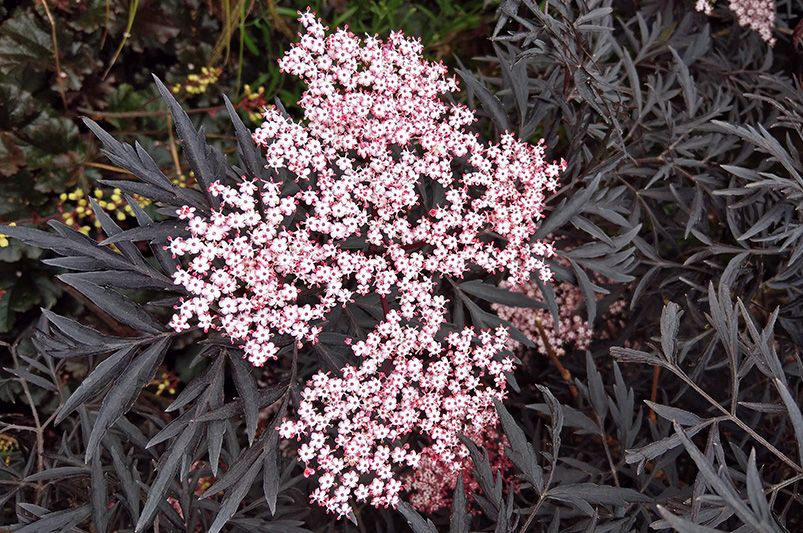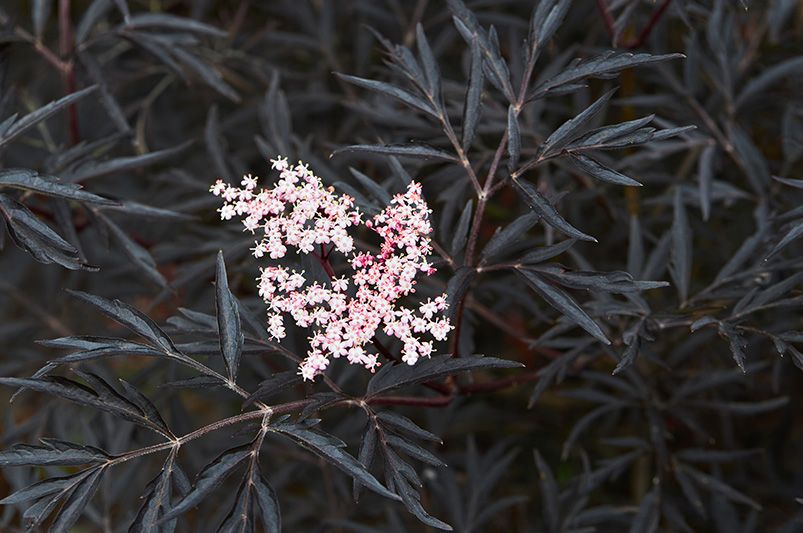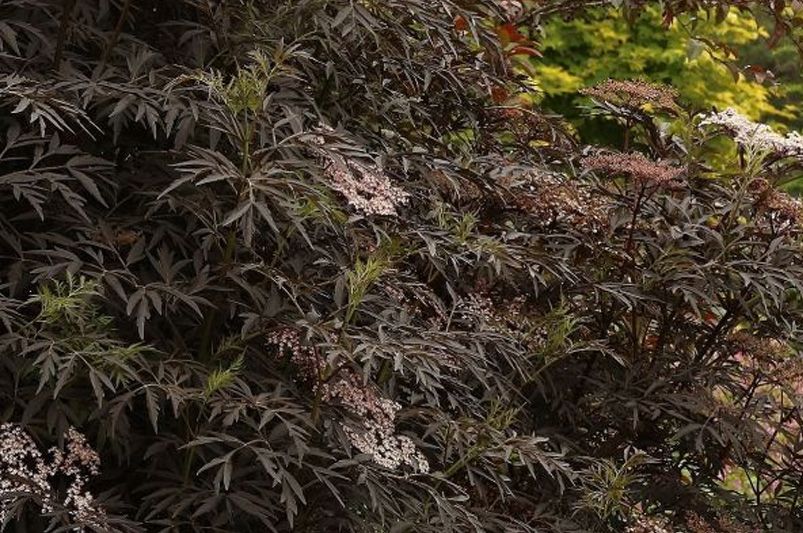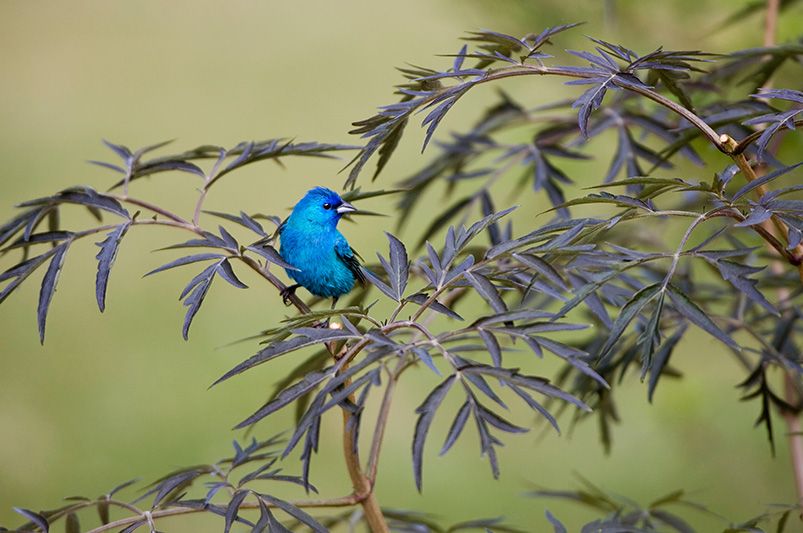
Black Lace Elderberry: A Dark Jewel for Your Garden Oasis
Published: 12/03/2024 | Updated: 15/03/2024
Black Lace Elderberry is a dark jewel for your garden oasis. This plant has an intriguing history, with a name that seems to have been pulled from the pages of a fairy tale. The botanical enigma behind its name is only one element that makes it such an interesting addition to any garden. In this article, we will be talking about the reasons why you should consider adding Black Lace Elderberry to your yard, plus some tips on how best to care for it once it's there.


Black Lace Elderberry: A Botanical Enigma
Black Lace Elderberry is a beautiful plant, with intense purple-black foliage (dark foliage) that's accented by white and pink blooms. It's a member of the Sambucus family, which includes other plants like blueberries and cranberries. The black lace elderberry can grow up to 6 feet tall, but it tends to stay shorter than that because it doesn't get enough sunlight in many areas where it grows naturally, China and Japan being two of those places.
The white flowers are clusters of tiny flowers called umbels. These umbels form along stems near new growth at the tips of branches and dark leaves. They bloom from May until July depending on where you live: if you live somewhere warmer than USDA Zone 7a, expect blooms from May through August. If your area falls into Zone 7b or lower, then your plant will probably only make it through June before drying up for winter.

Beyond Beauty: The Enchanting Nature of Its Creamy Pink Flowers
Black Lace Elderberry is a beautiful ornamental plant, but it's also an important food source for wildlife. It is a great addition to your home garden because it offers both beauty and utility with its creamy pink flowers. They are edible and delicious, and the blackberries with a tart flavor that makes them perfect for pies or simply eating fresh. They're also medicinal: many traditional Chinese herbalists believe that black lace elderberry tea can help treat ailments like colds, flu, and even cancer.
It is easy to grow in most climates, can tolerate temperatures as low as -20 degrees Fahrenheit, and grows well in dry soils, both indoors and out. You can even grow this versatile shrub in containers. The blooms will last all summer long if you prune them regularly. Otherwise, they may drop early due to excess water stress caused by heavy rainfall or excessive irrigation.
Creating an Oasis with Black Lace Elderberry
If you are looking for a plant that will provide visual interest, fragrance, and fruit, look no further than Black Lace Elderberry (Sambucus nigra 'Black Lace'). This popular ornamental shrub is an excellent choice for borders or hedges. It also makes an eye-catching addition to containers or hanging baskets.
In addition to being attractive in its own right, it attracts birds with its berries and butterflies with its pink flowers. With so many benefits, this plant should be part of every garden. Black Lace Elderberry is a deciduous shrub that typically grows to 6 feet tall, with an equal spread. It has arching branches that provide shade in the summer but allow plenty of sunlight to reach the ground below.
Living the Dark Oasis Dream
A dark oasis is a garden that has been designed to thrive in the shade. It's beautiful, it's easy to care for and you don't have to worry about your plants getting sunburned. All you need is some knowledge of what plants grow well in the shade and how much water they can handle.
Black lace elderberry (Sambucus nigra 'Thundercloud') is one of my favorite plants for creating a dark oasis because it makes such an impressive statement when it flowers, and even before then, its large leaves provide great coverage for other plants underneath them.
Planting
The best time to plant elderberry is in spring, especially if you live in a mild climate with no harsh freezes. Choose a time before the plant starts putting out new leaves. It can also be planted in the fall allowing the roots to establish before the cold winter, giving the plant a head start for spring growth. It needs full sun, so choose a location that gets at least six hours of direct sunlight per day. The ideal site would be protected from wind, but if you don't have such an area available then it's fine to plant your elderberry plants under trees or shrubs where they will get some protection from harsh winds and cold temperatures.
Elderberry prefers well-drained soil, acid or alkaline soils with a more neutral soil pH level (pH 7). You'll want to add some compost or manure when digging the hole for your new plant. This will help amend any poor soil conditions you may have had before adding these amendments. It will grow well in many different soil types, but it prefers a sandy loam or moist soil that drains easily.
Caring
Black lace elderberry is a great plant for beginners looking to add something new to their garden. It requires minimal care, and it's relatively disease-resistant. The plant can be propagated by seed or root division, but it's easiest to start with nursery-grown plants that have already been hardened off and planted in the ground.
If you live in an area where there are pests such attract birds or such as rabbits or voles eating all of your plants' roots before they have time, to grow up high enough above ground level where these critters cannot reach them anymore. Then consider building some type of barrier around each clump so nothing can get close enough.

Watering
Once your plant is established, water regularly until it becomes well-established. Then you can reduce watering slightly so long as there isn't a drought going on in your region. Unless you live in an area where rainwater is abundant, you won't need to water your elderberry plant. Elderberries prefer to be watered in the morning or evening for best results. You'll also want to consider other varieties of the elderberry shrub-like 'Black Lace' or 'Black Beauty'. These shrubs love moisture but will still thrive if watered regularly. To ensure they get enough water while retaining their natural beauty, make sure not too much water builds up around their roots. Otherwise, this could cause root rot which would kill off all your hard work.
-
How much to water: The amount of water you give your elderberry will depend on how hot it is outside and how much rain there has been recently as well as what type of soil it's planted in. If possible, check on your plant daily by gently squeezing its leaves, if they feel dry when squeezed then water them to keep them moist.
-
When should I water? In general terms, elderberries should not be allowed to go completely dry between watering sessions but don't overdo it either, you don't want soggy roots. When watering plants like this one with shallow root systems, aim for approximately 1 inch per week during periods when temperatures are above 50 F, less if temps fall below 40 F during winter months.
Pruning
Black lace elderberry is a deciduous shrub that grows in sun or shade. It can be pruned at any time during the growing season, but it's best to prune in early spring before new growth begins. Pruning should be done on old wood, which is greenish-brown and has no buds on it. After flowering and when the berries are ripe, cut back all stems by about one-third of their length to maintain shape and size. This will also help prevent disease from spreading through your plantings. You should never prune it after late summer or fall because this will result in poor fruit production next year.
Fertilization
Fertilization is not necessary for black lace elderberry. If you have a large planting and want to fertilize, use a balanced fertilizer in the spring or early summer. Make sure to water the plant well before applying any fertilizer. This will help keep salts from building up in the soil around the roots.
Fertilizers that contain nitrogen (N) are good for flowering plants and shrubs, but too much can cause foliage to burn on its leaves. Phosphorus (P), potassium (K), magnesium, and calcium are all important elements of good health for this plant as well. These nutrients should be found in most balanced fertilizers or added separately if they're not included in your chosen product formulation.
You may need to add more than one of these nutrients at different times during the year depending on what stage of growth your plant is currently experiencing. However later in summer when flower buds begin developing it would also be beneficial if additional potassium were applied alongside other nutrients such as nitrogen which help promote healthy fruit production.

Pests and Diseases
While Black Lace Elderberry is generally considered a sturdy and disease-resistant plant, it can still succumb to certain pests and diseases, especially in specific environmental conditions or neglectful care. Here's a breakdown of the most common culprits:
Pests:
-
Aphids: These sap-sucking insects can cluster on leaves and shoots, causing distortion and stunted growth. They are most common in dry weather. Look for sticky honeydew secretions on leaves as a sign of aphids.
-
Borers: These larvae tunnel into stems and branches, weakening the plant and potentially causing dieback. Signs include wilting leaves, branch breakage, and sawdust around entry points.
-
Japanese beetles: These metallic beetles feast on foliage, leaving ragged holes and skeletonized leaves. They are most active in late summer and early fall.
-
Scale insects: These tiny, armored pests attach themselves to leaves and stems, sucking out sap and leaving behind a black, sooty mold.
Diseases:
-
Powdery mildew: This fungal disease forms a white powdery coating on leaves and shoots, which can stunt growth and reduce photosynthesis. It thrives in humid conditions and poor air circulation.
-
Leaf spot: Various fungal or bacterial pathogens can cause brown or grey spots on leaves, leading to defoliation and weakened plants. Overwatering and poor drainage can contribute to leaf spot.
-
Verticillium wilt: This soilborne fungus infects the vascular system of the plant, causing wilting, yellowing leaves, and eventually death. It can remain in the soil for years, making replanting difficult.
Get Your Black Lace Elderberry and Create Your Dark Oasis Dream
Black Lace Elderberry is a striking addition to any garden. It's beautiful, hardy, and requires little care. It can thrive in full sun or partial shade and will even grow in dry conditions. If you're looking for something that adds color to your yard year-round and doesn't need much attention at all then this might be just what you're looking for. Check out ShrubHub’s online store for the best Black Lace Elderberry in the market!


